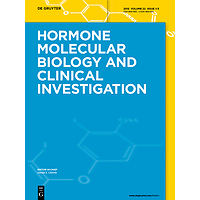Background: Metabolic syndrome (MetS) continues to be a significant problem globally, affecting nearly 35% of adults in the USA. Whilst there is no ideal biomarker that captures this disorder, high sensitivity C-reactive protein (hsCRP) appears to be most widely accepted. We examined the ratios between neutrophils (PMNs) and monocytes to high-density lipoprotein (HDL)-cholesterol and adiponectin, two anti-inflammatory proteins, in patients with nascent MetS without the confounding of diabetes, atheroscleroticcardiovascular diseases (AS-CVD), smoking or lipid therapy to determine if they were also valid biomarkers of MetS.Materials and methods: Patients with nascent MetS (n = 58) and matched controls (n = 44) were recruited from Sacramento County. Fasting blood samples were obtained for complete blood counts, basic metabolic panel, lipid profile, insulin and adiponectin. Ratios of PMNs and monocytes to HDL-C and adiponectin were calculated and compared statistically.Results: The PMN:HDL-C, monocyte:HDL-C, PMN:adiponectin and monocyte:adiponectin ratios were significantly increased in patients with MetS and increased with increasing severity of MetS. Receiver operating characteristic (ROC) curve analysis showed that both the PMN:HDL-C and monocyte:HDL-C areas under the curve (AUCs) significantly added to the CRP AUC. Also both the ratios correlated with cardio-metabolic features of MetS, hsCRP and insulin resistance.Conclusions: Our data indicates that ratios of neutrophils and monocytes to HDL-C are significantly increased in patients with nascent MetS and both ratios appear to be better predictors of MetS than hsCRP alone. These important preliminary findings need to be confirmed in large prospective databases.

Neutrophil and monocyte ratios to high-density lipoprotein-cholesterol and adiponectin as biomarkers of nascent metabolic syndrome
Review badges
0 pre-pub reviews
0 post-pub reviews